Educational institution insurance is essential for protecting schools, colleges, and universities from financial risks caused by accidents, property damage, liability claims, and other unforeseen events. Running an educational institution involves more than academics — it requires maintaining a safe, secure, and well-managed environment for students, teachers, and staff.
This specialized educational institution insurance coverage ensures smooth operations, minimizes financial losses, and provides peace of mind for administrators.
In this article, we explore the key aspects of educational institution insurance, the types of coverage available, and why it’s a crucial investment for every educational organization.
What Is Educational Institution Insurance?
Educational institution insurance is a comprehensive coverage plan designed specifically for schools, colleges, universities, and other educational organizations. It provides protection against potential financial losses caused by accidents, natural disasters, lawsuits, or employee-related incidents.
Unlike standard commercial insurance, this coverage is tailored to address the unique needs of educational environments. It takes into account factors such as student safety, faculty liability, property protection, and event coverage.
Educational institution insurance helps ensure that learning continues, even when unexpected disruptions occur.
Why Educational Institution Insurance Is Essential
Educational facilities handle thousands of students, staff members, and visitors daily. With that level of responsibility, risks are unavoidable. Below are some of the main reasons why having proper insurance coverage is essential:
Protects Against Property Damage
Schools and universities often own large properties, including classrooms, laboratories, auditoriums, and dormitories. Campus property insurance provides coverage in case of damage from fire, vandalism, storms, or other disasters. This protection helps institutions recover quickly and continue operations without major financial strain.
Ensures Student and Staff Safety
Accidents can happen at any time on campus — during classes, sports events, or extracurricular activities. Student accident insurance helps cover medical expenses for injuries sustained by students during school-related activities, while teacher liability insurance protects educators against claims related to accidents, negligence, or professional misconduct.
Manages Legal and Liability Risks
With growing regulatory oversight and public accountability, educational institutions must also consider legal exposure. University liability insurance and insurance for educational organizations cover claims related to injuries, discrimination, or other legal disputes that might arise. These policies help reduce financial stress during legal proceedings.
Safeguards Against Business Interruption
Unexpected events such as fires or natural disasters can halt operations temporarily. Educational institution insurance can include business interruption coverage, which compensates for lost income during downtime, helping schools recover faster and maintain staff salaries and essential functions.
Supports Risk Management in the Education Sector
Institutions that prioritize education sector risk management reduce their exposure to potential losses. Having the right insurance plan in place demonstrates preparedness and responsibility, building trust with parents, students, and staff.
Types of Insurance Coverage for Educational Institutions
Every institution has unique needs based on its size, facilities, and programs. Below are the most common types of coverage available under educational institution insurance:
Property Insurance
Protects buildings, equipment, furniture, and other physical assets from damage caused by fire, theft, or natural disasters.
General Liability Insurance
Covers bodily injury or property damage claims made by students, visitors, or third parties on campus grounds.
Professional Liability (Educators’ Legal Liability)
Also known as teacher liability insurance, this protects faculty members and administrators from claims related to errors, negligence, or failure to perform professional duties.
Student Accident Insurance
Provides coverage for medical expenses related to student injuries during school-sponsored activities, sports, or trips.
Workers’ Compensation
Covers employees who may suffer injuries while performing their duties on campus, ensuring they receive necessary medical care and compensation.
Cyber Liability Insurance
With the rise of digital learning and online records, cyber liability insurance protects against data breaches, hacking, and cyberattacks targeting student or staff information.
Directors and Officers (D&O) Insurance
Covers school administrators, trustees, and board members from legal claims arising from decisions made in their official capacities.
Coverage for Different Educational Settings
Educational institution insurance offers tailored coverage for schools, colleges, and universities. Each setting receives protection suited to its unique risks, from student safety to property and liability concerns.
Public and Private Schools
Whether large or small, schools benefit from school insurance coverage that includes general liability, property protection, and student accident policies.
Colleges and Universities
Higher education institutions often require broader coverage, such as college insurance plans and university liability insurance, to protect against legal disputes, property damage, and research-related liabilities.
Private and Charter Institutions
Customized insurance for private schools can include specialized coverage for staff misconduct claims, tuition refund guarantees, and transportation-related liabilities.
Nonprofit Educational Organizations
Many educational organizations operate as nonprofits and may require insurance that supports fundraising events, volunteer programs, and donor relations.
How to Choose the Right Educational Institution Insurance
Choosing the right policy depends on several factors, including the size of the institution, the number of employees and students, and the facilities operated. Here are some best practices:
Assess Your Risks
Identify potential vulnerabilities — such as outdated infrastructure, large student populations, or outdoor events — and select policies that address those specific risks.
Review Coverage Limits
Ensure that coverage limits are sufficient to handle worst-case scenarios, including building replacement costs, injury settlements, or equipment replacement.
Work with Experienced Insurers
Partnering with an insurance provider experienced in educational institution insurance ensures that your plan includes all relevant protections and complies with local regulations.
Review and Update Annually
As your institution grows, your insurance needs will evolve. Regularly update your policy to reflect new assets, staff, or programs.
Benefits of Having Comprehensive Educational Institution Insurance
Comprehensive educational institution insurance provides essential protection for schools, colleges, and universities. It helps secure your campus, staff, and students against financial risks and unforeseen events.
- Financial Protection: Reduces financial losses from unexpected incidents.
- Legal Security: Shields schools from costly lawsuits and settlements.
- Peace of Mind: Allows educators to focus on teaching without worrying about liabilities.
- Reputation Management: Demonstrates professionalism and commitment to safety.
- Continuity of Operations: Ensures smooth recovery from unforeseen events.
Conclusion
Insurance is often viewed as a safeguard for emergencies — but for schools and colleges, it’s an investment in long-term stability. Educational institution insurance not only protects property and finances but also reinforces trust among students, parents, and staff.
By carefully evaluating coverage needs, working with experienced insurers, and prioritizing risk management, educational organizations can create a safer and more secure learning environment for everyone.
Frequently Asked Questions (FAQ)
What does educational institution insurance cover?
It covers property damage, liability claims, student accidents, employee injuries, and more. The coverage may vary depending on the institution’s specific risks and size.
Do small private schools need educational institution insurance?
Yes. Even small schools face potential liabilities, from student injuries to staff-related claims. Insurance for private schools helps ensure long-term protection.
Is cyber insurance necessary for schools and colleges?
Absolutely. With digital learning platforms and student data storage, cyber liability insurance is now essential to prevent data loss and financial exposure.
How often should schools review their insurance policies?
It’s recommended to review policies annually or whenever major changes occur, such as new programs, facility expansions, or staff increases.
Can insurance help with campus safety management?
Yes. Insurance often includes risk management consultation to help improve campus safety and insurance measures across facilities.




